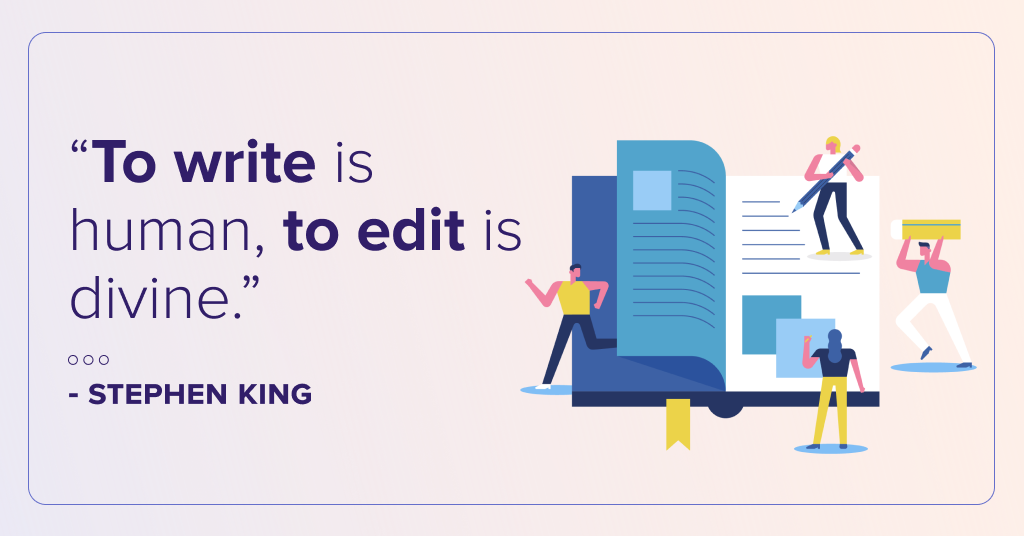In 2023, self-publishing is not only a world of opportunities but also of competition and challenge. Though don’t let it discourage you, the challenge is rather exciting.
For all the indie authors out there, we prepared a guide on the nuances of self-publishing in the year to come and what it takes to maximize your chances of success.
We have a lot to discuss, so without further ado:
- How COVID-19 Affected Book Publishing Industry
- Self-Publishing vs Traditional Publishing in 2023
- How to Self-Publish a Book: Preparation and Process
- After Self-Publishing
- Summing Up
How COVID-19 Affected Book Publishing Industry
As if the radical metamorphosis of the book industry due to tech development wasn’t enough, COVID made its contribution to the process. However, not all changes were detrimental.
The good news is people started reading more. For instance, according to the survey conducted by Marcello Giovanelli in the UK, two-thirds of respondents started reading more. Only 10% reported that they read less. Also, readers became particularly interested in thrillers, crimes, and other popular fiction. Sales of nonfiction for young readers and books about social justice spiked as well.
On the other hand, the number of US citizens reading books remained static at 65%, according to a PEW research
As for the bad news: Covid-19 lockdowns and other pandemic measures, bricks-and-mortar stores have emerged as the clear losers in many markets because people started buying online more.
But, as the covid-measure were eased, people returned to brick-and-mortar shops, so we can see the return to the previous numbers where almost half of all books bought in physical stores.
Self-Publishing vs Traditional Publishing in 2024
You can succeed in both self-publishing and traditional publishing though they present two widely different experiences. Here are some core differences:
Speed
With self-publishing, if you decide to settle on an ebook, you can have your writing on the market in mere days. There are no agents who decide whether your book is worth the effort, just your inner critic. Though the latter can be the harshest one.
For example, on Amazon KDP, “publishing takes less than 5 minutes, and your book appears on Kindle stores worldwide within 24-48 hours.”

On the contrary, with traditional publishing, the road is much longer. You need to find the agent, so then he or she can lobby your book to the publisher. Finding an agent, getting their attention with a query letter, and creating an effective book pitch are complex processes.
Cost and Profit
In self-publishing, everything is on you: book formatting, editing, proofreading, and cover design. You either do it yourself or hire other people to do it for you. If you decide to go print, the expenses are on you as well. At the same time, you get to keep up to 70% of profits, giving the rest to the self-publishing platform of your choice.
In traditional publishing, you get paid a fixed price for a book and maybe get a small cut of your book sales. In addition, your agent may take a commission from the book sales. At the same time, you get to keep up to 70% of profits depending on the format and pricing, giving the rest to the self-publishing platform of your choice.
Marketing
If you go indie, a hat of a marketer should be your second favorite hat, as it’s difficult to increase sales without boosting online visibility. You’ll handle the book promotion, social media development, and other marketing campaigns, or hire other people to do it for you.
In traditional publishing, if you are lucky, the publisher will handle the marketing team for you as well. However, it’s quite unlikely for beginner authors and small publishers. Besides, often the marketing is “usually to booksellers rather than consumers; but you should at least get a sales team to take books to bookstores.”
It’s completely up to you to decide whether to go indie or not. If you strive for complete creative freedom and the quickest time to market — self-publish your book. If you want the support of a well-experienced team and the prestige of being an author on contract, choose the traditional approach
Where to Self-Publish?
The easiest and quickest way of self-publishing is online book retailers, such as Amazon Kindle, Apple Books, Barnes and Noble Press, Kobo… The list goes on. It’s very easy to fall victim to analysis paralysis with such a number of options.
To avoid overthinking staff that sucks all energy out of you, you can do one of the following:
- Choose the biggest online book retailer and roll with it for a start
- Use aggregators, which will share your book on different platforms, but will take a cut of profits (usually around 10%). Some popular aggregators are Draft 2 Digital, Smashwords, and Streetlib.
Amazon KDP is touted as the easiest platform for indie author newbies. Also, it has the biggest market share. It reportedly controls at least 40% of print book sales in the US. Amazon’s market share in ebook sales stands at about 67%, climbing to 83% if we include Kindle Unlimited.
Our advice is to start on Amazon without any intermediaries. Get the hang of the self-publishing game and then go and publish your book on other platforms with the help of aggregators.
At the end of the day, no matter which approach you’ll choose, your book should be well-prepared for a big world of indie literature.
How to Self-Publish a Book: Preparation and Process
We won’t sugarcoat it, the competition is rough in the self-publishing world. But don’t let the threat of some challenge discourage you. The necessity to adapt, overcome, and improvise pushes us to the limit of our capacity and helps to bring the best results.
Besides, there are a few simple and effective steps you can do to ensure that your book will be closer to the top of the niche in terms of marketability.
If you’ve already written a book, you have much more perseverance and focus than required to handle the rest.
How to Prepare Your Book for Self-Publishing in 2024
1. Building a Platform
Ideally, before self-publishing your book, you already have some following on social media and a website. If not, the second-best time to start is now. Some online visibility can go a long way in boosting your brand.
So, what you need is
- A page on Facebook and/or Twitter with consistent activity
- A minimal website with some information about your books and yourself. If you have some free time, a blog can be a nice idea as well.
It will be a nice foundation for building your platform up after your book hits the market.
2. Editing
So your book is done, and perhaps you already reread and rewrote it so many times that you doubt your feelings about the creation. It’s a normal process, and it’s great you did your best to polish your writing.
Now, you should find an editor who would do their share of polishing.
Even if you are an editor yourself, it’s really difficult to give honest feedback to yourself as the mind is so used to your writing style. Input from a professional third-party editor can be invaluable and elevate your manuscript to another level.

3. Proofreading, Formatting
Afterward, the good idea is to hire a proofreader who will find tiny mistakes, “blots,” double spaces, or lack of commas that detract from the cleanliness of your manuscript.
Then, you can format your book or hire professionals to do it for you. Here’s a neat instruction from Amazon KDP on ebook formatting.
4. A Catchy, Telling Title
If you write fiction, your title should be more or less genre-specific. For example, if it’s romance, you better not name your book “Quest of Destiny”; or if it’s fantasy, “Passions Embrace” is not the best choice either. Your primary aim here is to not confuse your target audience. Confused people don’t buy.
If it’s nonfiction, the title and subtitle that are telling about the book’s content are optimal. For example, if your book is about creating imaginary worlds, the title “Worldbuilding: Creating a Believable Universe From Scratch” will be a suitable name.
A few examples:
Also, remember that Amazon is a search engine. Thus, keywords are very important. Do your research and incorporate long-tail keywords if possible. Amazon’s title + subtitle limit is 200 characters, so you have plenty of space to work with.
5. Cover Design
A great title without a great cover design will be neglected. Do your book a justice and ensure a professional book cover design that won’t be lost in the vast sea of thumbnails.
You can write a book on book covers, but here’s the essence of it:
The combination of typography, colors, and imagery should amount to a cover that attracts attention, promises a nice read, and stays within the genre’s conventions.
If you want to read a little more about ebook covers, we have a neat article on its main features and differences between digital and print cover design.
Publishing
Amazon KDP has a thorough step-by-step instruction on the publishing process, so we won’t repeat it here. However, we want to focus on several moments essential to the success of your self-published book:
1. Write a book description
Writing a nice description is an art in and of itself. It should have a strong hook and captivating storytelling within the minimum of space. You can also put some keywords inside if they don’t break the flow of the description and seem natural.
2. Come up with keyphrases
Amazon will give up to 7 key phrases to associate your book with. Choose carefully, you can’t simply wing it because that’s super important for the Amazon SEO visibility of your book.
Therefore, do some research:
- Use Amazon autofill function via incognito mode
- Examine competition and its keywords
- If you have a following of genre enthusiasts and doubts about keywords, ask your fans
Amazon has a handy instruction on keywords. Also, pay attention to the section “keywords to avoid.”
3. Choose categories
Amazon will offer you two categories for your book.
Choose one broader category, for example, Mystery and Crime, and one narrower and more specific, i.e. Women’s Crime Fiction.

It will allow you to compete on two different levels.
If you are extra determined, you can add up to 10 categories following the request process. It’s not always justified but can be beneficial for your social proof as you it’s easier to get into a best-seller group in less competitive categories.
4. Price your book
We can only guess how much time, emotion, and effort you put into your book. But, people are not used to paying big sums for an ebook.
The highest royalties are for books priced between $2,99 and $7,99. So, for indie authors with a small following, the good idea is to start at $2.99. You can then gradually raise the price if deemed necessary or profitable.
The minimum possible price is $0.99 with 35% of royalties. Setting the lowest price makes sense if you want to try a super cheap pre-sale campaign or grab a piece of a skeptical audience.
If you look at best-sellers, most of them are either $4.99 or $7.99

After Self-Publication
So, you’ve mustered the strength and pushed that publish button. It must feel great. Congratulations! Now, if you want your book to shine, you have some other work to do.
1. Use Amazon ads
If you have some spare budget, it is a good idea to invest in Amazon Ads. A well-planned campaign can seriously boost your sales. You can also try Facebook/Twitter/Instagram ad campaigns.
2. Try to get more book reviews
If possible, ask your following on social media to leave Amazon reviews. You can reach out to reviewers directly and ask them in exchange for a free copy. Also, you can leave a CTA for reviews at the very end of your book. In other words, do your best to maximize the number of sincere reviews on your Amazon page.
3. Use lead magnets to build a bigger following
A lead magnet is a special offer or a giveaway for your potential readers in return for their email addresses. It’s a great tool for growing your audience, boosting conversion rate, and building strong email campaigns.
Here are some tips on lead magnets from Beth Barany, an award-winning author, and a celebrity coach.
4. Use email marketing to your benefit
Email marketing is a powerful tool for communicating with your readers, building your brand, and promoting your books. Keeping in touch with your readers without intermediaries is particularly important now in the face of the growing monopoly of online book retailers.
Read more about email marketing here.
5. Think about future
As your book sales and fan base growth, think about getting an audiobook and/or print book. If you feel like it, you can try recording your own audiobook.
Summing Up
Regardless of how easy it is to self-publish a book in 2023, you still have plenty of work to do if you want to maximize your chances of success. Nevertheless, we believe that a person who’s able to start and finish a book has what it takes to make everything work.
We wish you luck and perseverance. And if you need any help with book cover design or author branding materials, feel free to contact us.








